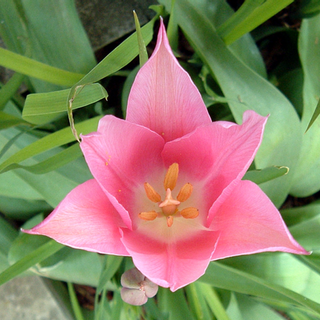I’m just back from the 3rd Annual Amsterdam Symposium on the History of Food, with a bulging notebook and a couple of interviews. While those come to a boil, I wanted to share a wonderful new (to me) website from the Museum Boijmans Van Beuningen. As the website explains:
ALMA links these depictions of pre-industrial objects, dating from the late Middle Ages to the nineteenth century, in paintings and prints to examples of similar material objects. The ALMA database can be searched extensively for the relation between object and depiction. Research results are published in the ALMA showcases.
At the Symposium Dr Alexandra Gaba-van Dongen presented a selection of examples from the ALMA showcase, including this thorough examination of some Van Gogh still-lifes.
Fascinating stuff, that I think could be a very useful resource for anyone interested in food culture as depicted in art.

 As ever, I’m taking a little break and bringing you some repeats from 2015. This one is prompted by an episode of NPR’s Planet Money that I’ve just listened to. They decided to cook a peacock for reasons that I think had something to do with the role of spices in global trade and the birth of capitalism in the 17th century. And who should they call on as their expert guide but Christianne Muusers.
As ever, I’m taking a little break and bringing you some repeats from 2015. This one is prompted by an episode of NPR’s Planet Money that I’ve just listened to. They decided to cook a peacock for reasons that I think had something to do with the role of spices in global trade and the birth of capitalism in the 17th century. And who should they call on as their expert guide but Christianne Muusers. 
 Maybe you’ve read about experiments that show that when potato crisps crunch louder, people say they’re fresher. And beyond crisps, all sorts of taste sensations can be manipulated by the sounds that surround them. Heavy metal apparently renders a Cabernet Sauvignon more robust. The drone of an airplane engine renders the umami of tomato juice more or less irresistable, a fact I can attest to. Top chefs are using sound to manipulate the dining experience, but when it comes down to it, I was very doubtful that drinking beer while listening to music would have any noticeable effect. I was wrong.
Maybe you’ve read about experiments that show that when potato crisps crunch louder, people say they’re fresher. And beyond crisps, all sorts of taste sensations can be manipulated by the sounds that surround them. Heavy metal apparently renders a Cabernet Sauvignon more robust. The drone of an airplane engine renders the umami of tomato juice more or less irresistable, a fact I can attest to. Top chefs are using sound to manipulate the dining experience, but when it comes down to it, I was very doubtful that drinking beer while listening to music would have any noticeable effect. I was wrong.